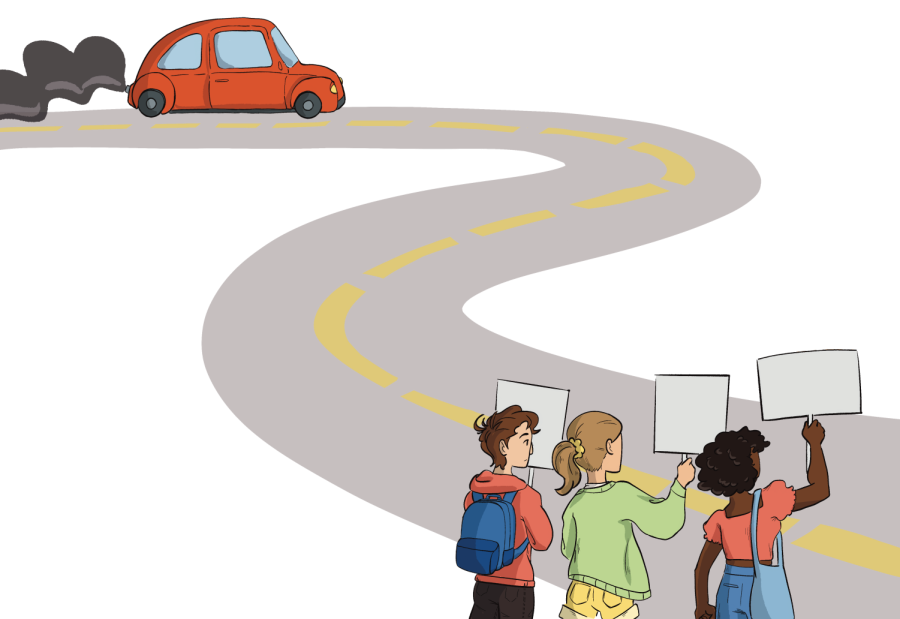Clean LA air one step at a time
Investing in better public transport for the city will make Los Angeles more walkable and in turn greener for future generations. LA must lower their position as the eighty-fifth most polluted city in the world according to the 2022 World Air Quality Report.
April 19, 2023
Iridescent puddles and dirty air are part of the daily sights in Los Angeles, but they don’t have to be if we invest in better public transport for the city.
Last year, LA was counted as the eighty-fifth most polluted city in the world according to the 2022 World Air Quality Report. About 20% of this is caused by cars and trucks in the city, as 14% of the city’s land is devoted to parking spaces. The sidewalks in LA are narrow and cyclists don’t have much room to work with.
This is unlike New York City, which offers a wide array of transportation possibilities and is considered the most walkable city in the country. NYC sees this success thanks to it boasting the world’s largest rapid transit system and plenty of bicycle lanes, as well as navigable streets and large acres of parks.
If the need for car usage to get anywhere and everywhere in Los Angeles was lessened or road lanes were reduced, native flora could be planted in their stead. This, combined with less car usage, would allow for a greener LA to thrive, reducing its pollution rates and allowing the streets to smell of fresher air.
Not only this, but it would make everything in a community more close-knit. People would choose to walk more over driving because of the closer distance. The preference for walking over driving would lessen the amount of smog in LA.
Decriers may balk at the price tag of reducing car usage through rebuilding infrastructure in LA, but the change would be worth it. In 2022, the Los Angeles County Metropolitan Transportation Authority approved an $8.8 billion budget in an attempt to revive the battered system. Not only is this a good step in the right direction but it also shows that the city can absolutely afford to allocate budget plans in order to reduce car usage and encourage public transport usage, considering one county has already turned its eye to the matter of public transportation.
A greener LA would let people live closer to where they work and drive on smaller roads, as fewer people would need to commute to their workplaces every day. Those who need to get to work would be able to walk short distances, allowing them to flex their muscles underneath the plant life that could replace the long roads we have now. A less car-reliant LA would ensure the next generations of life would be able to breathe healthier air.








